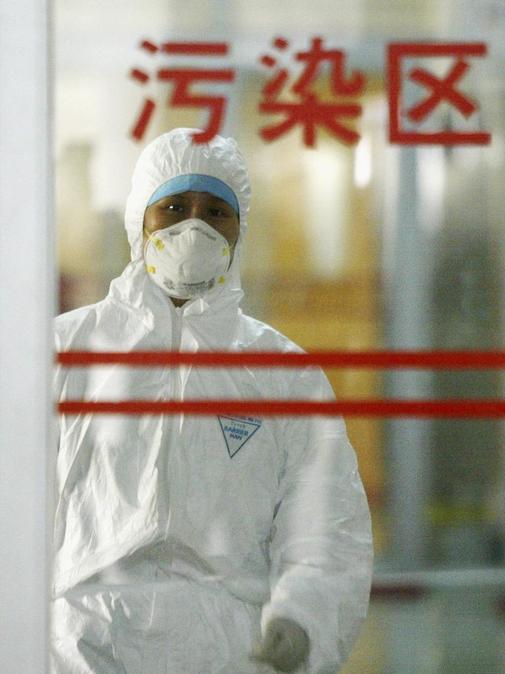- SARS and MERS. New clues in the fight against coronaviruses
A few days ago, fear of a deadly ghost of the past visited China by surprise. Several users of the Weibo social network feared the worst: SARS would have returned. That severe acute respiratory syndrome that 17 years ago left Guangdong Province and swept through Asia. It spread through 37 countries leaving 774 dead and more than 8,000 infected.
This time a strange outbreak of pneumonia has emerged at the end of December in a fish market in the city of Wuhan, in the center of the country. At first, the silence of the Chinese authorities reigned. And that every day new cases of contagion come out. In total, until today: 59 people, seven of them in critical condition. What made the rumors about a possible resurgence of SARS resound again among the Chinese people. And more after the International Society for Infectious Diseases, based in the United States, stressed that there were "numerous unconfirmed reports that mentioned a new SARS coronavirus ."
It was not until Sunday when the Wuhan Municipal Health Commission ruled out that it was that virus. Although it has not yet been possible to identify this mysterious strain of pneumonia that has already put other areas of the continent on alert.
Because 920 kilometers south of Wuhan, in Hong Kong, there have been 21 cases of people with fever and respiratory problems in people who had just returned from Wuhan. Although it could not be confirmed that it is the same virus. The authorities of the former British colony have activated a response described as "serious level", performing temperature controls on all travelers arriving from the Chinese city where the strange pneumonia arose.
Many Hong Kong people have panicked over fear of an epidemic and have flocked to buy the mask that became popular during the SARS outbreak in 2003 . Newspapers such as the South China Morning Post have reported that supplies of these disposable surgical masks are running out in local stores as well as online stores. And that, due to limited stock, traders are doubling prices.
"We still do not know the cause of the disease or if it can spread among humans ... It seems that the Chinese Government can contain the disease in a short period of time through quarantine," Professor Ivan Hung Fan explains to the Post. -ngai, infectious disease expert at the University of Hong Kong.
Other Asian countries have also begun taking preventive measures in fear of this unknown pneumonia. At the airport in Singapore, temperature controls are being made for all travelers returning from Wuhan. In South Korea, the country's disease control and prevention centers established a quarantine work group and warned Wuhan visitors not to touch wild animals or poultry, or visit local markets. And in Vietnam, the Ministry of Health yesterday ordered medical centers across the country to "strengthen the supervision of the spread of acute pneumonia in the face of the spread of the disease in China."
The World Health Organization (WHO), which is monitoring the situation in coordination with the Chinese authorities, has asked for prudence since "there is limited information to determine the overall risk of this reported group of pneumonia of unknown etiology ."
But the reality is that within the Asian giant many still fear the possibility of a national epidemic. And more on these dates. We must not forget that we are on the eve of the Chinese New Year (January 25) and that hundreds of millions of people will travel throughout the country to meet their families during the holiday.
The threat of coronaviruses
The SARS epidemic especially alerted health authorities about the risks of coronaviruses, a family of pathogens that are sometimes able to put public health in check. Since 2003, different suspicions of virus outbreaks similar to SARS have led to the implementation of contagion prevention measures (the image shows the precautions taken at a Guangdong Hospital in response to a suspicion of atypical pneumonia in 2004). But, without a doubt, what made all the health alerts jump again was the appearance of the so-called Middle East respiratory syndrome (MERS), a disease caused by a new SARS-like coronavirus that was first detected in Saudi Arabia in 2012 .
2,144 cases of MERS infection and about 750 pathogen-related deaths have been described in 27 countries (2018 data), although all cases have been linked in one way or another with stays in or around the Arabian Peninsula.
Unlike in the case of SARS, MERS infection is usually more severe in elderly patients or with previous cases of chronic diseases, such as diabetes or different kidney diseases. In approximately 20% of those affected, the virus does not cause serious problems, but a picture of symptoms similar to that of a cold or gastroenteritis.
Although it has not been possible to determine the mechanisms of disease transmission, it is believed that the reservoir of the MERS virus is the dromedaries.
According to the criteria of The Trust Project
Know more- Science and Health
Climate crisis "Moderate optimism" in the presidency of the Climate Summit and pessimism among activists in the final stretch
Climate crisisGuterres: "Take advantage of carbon taxes to lower them to workers"
Health "Genomic research is the space race of our time"

